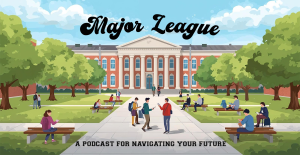Year-Round Schooling Deserves Reconsideration
February 6, 2020
The year-round schedule is an alternative to the traditional school calendar. Just the way it sounds — students attend school for the entire year, typically consisting of full nine weeks (45 days) and then a 3-week break (15 days). The number of days students will attend school and go on a break can vary, but this is the most common schedule such schools follow. They still follow the 180 days that are required by most state education department, but they’re spread over an entire year instead of 10 months.
Though the year-round school calendar may seem like a new idea, the National Association for Year-Round Education was founded in 1972. Staying true to their name, this association promotes the use of the year-round calendar over the more traditional school calendar. While it may still seem obscure, this system has been used by thousands of schools since the 1990s. Additionally, the Congressional Research Service found that year-round schools in the US are more popular in the south and west as opposed to the north and midwest.
Many schools have naturally chosen to follow the traditional school schedule because it seems easier. The traditional calendar may be more common, but there are more benefits to year-round schooling than people may realize. One such benefit is that it may raise test scores, improve student achievement, and be better for students and teachers overall.
The biggest advantage of the year-round schedule is how the breaks are set up. Not everyone loves summer break, and students don’t keep working on the information that was taught over the past year. Because of the long break, students can end up losing almost all of what was learned. This results in teachers spending the first few weeks of school reviewing a good amount of material that was taught to students over the last year. With a year-round school schedule, the students have continuous learning all year without the disruption of a summer break to forget everything they just learned.
Not only do students remember more when going to school all year, but the system also gives them a sensible rest period. After going for nine weeks with no breaks, they’re obviously going to be worn out from all the deadlines, projects, and tests. Having the 3-week break in between gives not only the students a chance to recover and relax, but the teachers also. This way everyone will come back from the break ready to learn and work.
But, admittedly, there are disadvantages to the system, most notably the scheduling of extracurricular activities like sports teams. A lot of teams take advantage of the summer break to hold practices and build camaraderie. Without the long three-month break, it may be harder to schedule practices after school and build a strong team. Also, players from competing schools may go to a school that follows a traditional schedule, so student-athletes may not get as long as a break as students who do not participate in sports due to games and practices.
Another issue is that year-round school limits what activities a teenager can do during the summer months. They may not be able to participate in summer camps, and teenagers who have a job will have to stay with the same hours instead of taking on longer hours in the summer and seasonal summer jobs are not possible since students go to school all year. Vacations with family or friends would be a lot harder to plan as well without missing important lessons. If a student wants to participate in college programs or internships over the summer this kind of schedule will most likely limit their options to choose from.
Something the parents struggle with is finding someone to take care of their younger children. Parents who work during the day most likely relied on the school to watch them until the school day was over. But with the year-round schedule, when the breaks come who is there to watch them now? It’s hard to find a babysitter who can work for three weeks every nine weeks.
There are obviously some really great advantages to going to school year-round, as unappealing as it may sound. Students and teachers get a break they truly deserve after a long, grueling nine weeks of non-stop work. But since many schools are still sticking to the traditional schedule, there are opportunities students may miss out on during the summertime.
The real question that should be asked is this: Do students want a summer break or four long breaks in between each nine weeks?













Harper lehnert • Nov 30, 2022 at 1:44 pm
this has been really helpfull for my sixth grade writing and i got so much info thank you. 😀
Reghan • Dec 8, 2022 at 9:41 am
same here